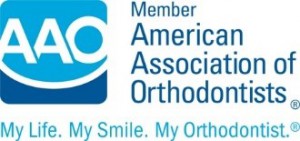By Dr. Tarek O. Zaki, D.D.S.

With the advent of clear tooth aligners such as Invisalign and Clear Correct, many family dentists took courses (some of which are only one or two days long) and became “certified” in providing this type of treatment. I have to stop and wonder if their trusting patients know and understand what their treatment options actually are, let alone what their orthodontic problems are.
When a dentist, i.e., a graduate of a dental school, wishes to become an orthodontist, he or she has to join a two or three-year orthodontic residency. During this time, he/she is educated and trained in the art and science of how to diagnose and treat people with misaligned teeth, jaws and related joint problems. Diagnosis is the foundation upon which a successful long-lasting outcome is to be expected. It is during this consultation/diagnostic phase that a patient should be informed about his or her existing problems and what different modalities of treatment can be used to address them: Will it be pure movement of teeth? Will there be any jaw alignment involved? Will this entail jaw surgery? Will any periodontal or restorative work be needed before, during or after the active orthodontic phase is complete?
 Above all is to discuss and explore what the patient’s choice may be. Some patients may choose to resolve their “chief complaint” only, such as correcting their crowded or rotated upper front teeth. Others may opt for a more comprehensive approach. Does the palate (roof of the mouth) need expansion? Does one of the jaws need to be brought forward or backward? Will this be attempted with some type of functional appliance or with the help of jaw surgery? Who are the other specialists that will be involved in this plan and does the patient know the financial aspect of all this? What is covered by the patient’s insurance and what will be out of pocket? The last thing anyone needs is to start with one plan only to wish treatment would have addressed other issues in the case.
Above all is to discuss and explore what the patient’s choice may be. Some patients may choose to resolve their “chief complaint” only, such as correcting their crowded or rotated upper front teeth. Others may opt for a more comprehensive approach. Does the palate (roof of the mouth) need expansion? Does one of the jaws need to be brought forward or backward? Will this be attempted with some type of functional appliance or with the help of jaw surgery? Who are the other specialists that will be involved in this plan and does the patient know the financial aspect of all this? What is covered by the patient’s insurance and what will be out of pocket? The last thing anyone needs is to start with one plan only to wish treatment would have addressed other issues in the case.
For an example to explain the value of all of the above, I will mention a case of an adult patient recently who sought to consult with me. His chief complaint was the gap between his two front teeth. Yes, this can be corrected in many different ways, some of which (ceramic veneers or cosmetic bonding) may leave the front teeth looking like chicklets. Another option is to do some limited orthodontic treatment followed by cosmetic work so as to allow for more proportionately-sized restorations. Then we have a comprehensive treatment plan that will address his very poor bite, the slanted smile line, the asymmetric jaw, the obstructive sleep apnea coming from the retruded lower jaw, etc.
Only a well-trained orthodontist can delve into such critical detail. This is the true value in seeking specialists’ advice: their know-how, their office set-up, staff training and many years of experience and continuing education.
It is also important to seek out an orthodontist who is a member of the American Association of Orthodontists and who is Board Certified by the American Board of Orthodontics, as Dr. Zaki is. Our office offers free consultations and second opinions.

Zaki Orthodontics in Virginia Beach Virginia is the practice of Dr. Tarek O. Zaki, D.D.S. He is an experienced orthodontist providing braces, Invisalign® and other orthodontic services to Virginia Beach and the surrounding cities in Hampton Roads, including Norfolk, Chesapeake, Suffolk and Portsmouth Virginia. Dr. Zaki offers free, comprehensive, 2nd opinion examinations. For a full list of Zaki Orthodontics’ treatments and services click here. Click here to request an appointment online or call for a consultation. 757-416-1100
Photos courtesy of FreeDigitalPhotos.net by stockimages

